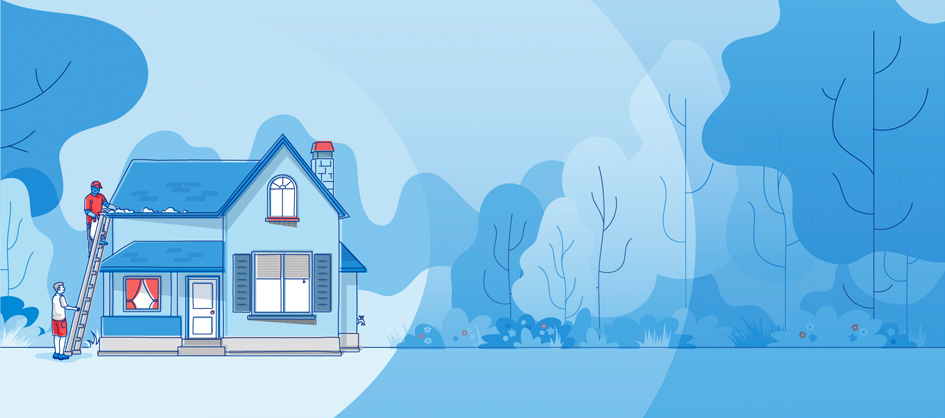All
Protecting your home from wildfires: The Red Zone
August 07, 2024
3 minute read

Want to protect your family and home against wildfires? Start by looking at the 30 metres around your home. Those 30 metres can be divided into Red, Orange and Yellow Zones – think of the Red Zone as the area closest to your house, while the Yellow Zone is that space that’s the furthest away. There are specific maintenance tasks and proactive steps you can take in each of your property zones to reduce your home’s vulnerability to wildfires.
Protecting the Red Zone: 0 metres to 1.5 metres around your home.
From ongoing maintenance to easy upgrades or larger reno projects. Here are some of ways you can protect the area immediately around your home.
Ongoing maintenance
Regularly clean gutters. Dry leaves and branches collected in gutters can quickly ignite sparks and embers. If you don’t want to clean your gutters often, consider installing a mesh screen so that debris doesn’t accumulate.
Check your eaves and vents. Open eaves and vents can let sparks and embers in. Make sure you have 3 mm screens covering the openings or install fire-rated vents. Ensure that soffits and fascia are properly fitted without gaps.
Cut the grass. Keep your grass cut short, since long, dry grass catches fire easily.
Check the roof. Regularly remove dry leaves and branches from any inside corners of your roof to minimize fires caused by airborne embers.
Clear beneath the deck. Don’t store combustible materials like firewood, umbrellas, patio furniture, brooms, and doormats beneath your deck.
Small, easy upgrades
Surround your home with at least 1.5 metres of non-combustible surface. Replace any wood chips, mulch and grass surrounding your home or deck with stones or gravel. These materials can help interrupt any fire that may be heading your way.
Treat the undersides of structures. Cover the areas beneath decks, balconies and your home with fire-resistant fibre cement board or metal screening since embers and sparks can collect there and potentially burn.
Install a spark arrester in your chimney. A crackling fire is wonderful – as long as it’s contained within your fireplace. Use a steel mesh screen to keep sparks and embers from escaping out the top of your chimney and spreading your fire elsewhere.
Separate your fence or boardwalk. While wooden fences and boardwalks are visually pleasing, they can also create a direct path leading the fire to your home. Separate the fence from your home by adding a metal gate to interrupt potential fire flow.
Bigger projects
Install fire-rated doors that have a good seal. Proper entry and garage doors can help guard against a fire from entering your home through your doors, along the sides or beneath them. As an added benefit, they’ll also keep the cold out, come winter.
Install tempered or thermal windows. These types of glass provide better resistance to heat from an advancing wildfire, when compared to single-pane windows.
Cover your home with a Class A fire-rated roof. Forgo the untreated wood shakes in favour of metal, asphalt, clay and composite rubber tiles. Wood shakes are not only combustible, but they also contain crevices where embers and sparks can enter.
Install fire-resistant siding. Stucco, metal, brick, concrete and fibre cement siding provide superior resistance against fires, as compared to logs and heavy timbers. Untreated wood and vinyl siding offer very little protection against fire.
As you start fireproofing your home, don’t forget to treat the sheds and other outbuildings on your property. Changes in your Red Zone will have the greatest impact in reducing your risk of fire caused by wind-blown embers or sparks. So, whether you’re doing regular maintenance, renovating, retrofitting, or building from scratch, these fire prevention tips can help keep your family and home safe.
This advice is intended to provide general information only and is not intended to provide legal or professional advice, or to be relied on in any dispute, claim, action, demand or proceeding. CAA Insurance Company does not accept liability for any damage or injury resulting from reliance on this information.
